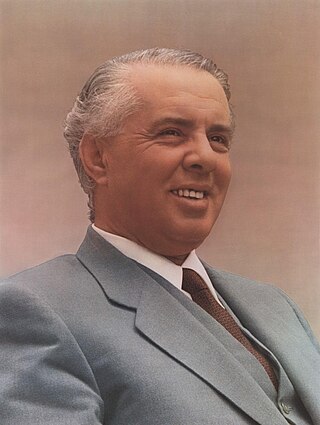
Enver Hoxha was an Albanian politician who was the ruler of Albania from 1944 until his death in 1985. He was the First Secretary of the Party of Labour of Albania from 1941 until his death, a member of its Politburo, chairman of the Democratic Front of Albania, and commander-in-chief of the Albanian People's Army. He was the twenty-second prime minister of Albania from 1944 to 1954 and at various times was both foreign minister and defence minister of the country.

Tirana is the capital and largest city of Albania. It is located in the centre of the country, enclosed by mountains and hills with Dajti rising to the east and a slight valley to the northwest overlooking the Adriatic Sea in the distance. It is among the wettest and sunniest cities in Europe, with 2,544 hours of sun per year.
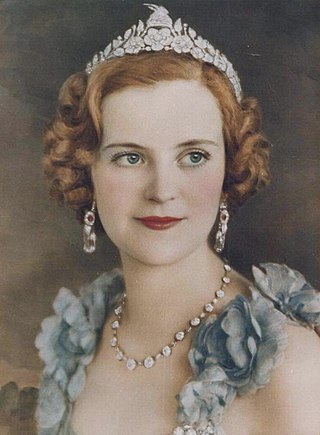
Geraldine was Queen of the Albanians from her marriage to King Zog I on 27 April 1938 until King Zog was deposed on 7 April of the following year.

Rrok Kolë Mirdita was an Albanian prelate of the Catholic Church who served as the archbishop of Tiranë-Durrës from 1993 to his death in 2015.

Mary Teresa Bojaxhiu MC, better known as Mother Teresa, was an Albanian-Indian Catholic nun and the founder of the Missionaries of Charity. Born in Skopje, then part of the Ottoman Empire, at the age of 18 she moved to Ireland and later to India, where she lived most of her life. On 4 September 2016, she was canonised by the Catholic Church as Saint Teresa of Calcutta. The anniversary of her death, 5 September, is her feast day.
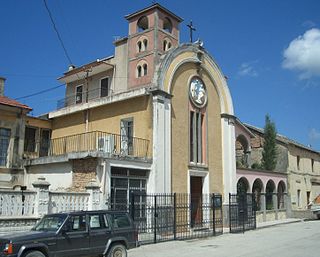
The Albanian Greek Catholic Church, or the Albanian Byzantine Catholic Church, is an autonomous Byzantine Rite particular church in full communion with the Catholic Church and the Pope of Rome, whose members live in Albania and which comprises the Apostolic Administration of Southern Albania. The Albanian Greek Catholic Church, with its Byzantine Rite, is closely linked to the Italo-Albanian Catholic Church sharing a significant commonality of history, identity and traditions.

The Angelus is a Catholic devotion commemorating the Incarnation of Christ. As with many Catholic prayers, the name Angelus is derived from its incipit—the first few words of the text: Angelus Domini nuntiavit Mariæ. The devotion is practised by reciting as versicle and response three Biblical verses narrating the mystery, alternating with the prayer "Hail Mary". The Angelus exemplifies a species of prayers called the "prayer of the devotee".
The most common religion in Albania is Islam, with the second-most-common religion being Christianity. There are also a number of irreligious Albanians. There are no official statistics regarding the number of practicing religious people per each religious group.

The Catholic Church in Albania is part of the worldwide Catholic Church, under the spiritual leadership of the Pope in Rome.

The Albanian Kingdom was the official name of Albania between 1928 and 1939. Albania was declared a monarchy by the Constituent Assembly, and President Ahmet Bej Zogu was declared King Zog I. The kingdom was supported by the fascist regime in Italy, and the two countries maintained close relations until Italy's sudden invasion of the country in 1939. Zog fled into exile and never saw his country again. The Communist Party of Labor of Albania gained control of the country toward the end of World War II, established a communist government, and formally deposed Zog.

St Paul's Cathedral is a cathedral in Tirana, Albania. It belongs to the Roman Catholic Archdiocese of Tiranë-Durrës. The stained glass window to the left of the front door features Pope John Paul II and Mother Teresa. Also a statue of Mother Teresa can be found at the entrance of the cathedral. It is a modern-looking building and does not resemble a traditional church.

The Dëshmorët e Kombit Boulevard is a major thoroughfare in Tirana, Albania. It was initially designed by Armando Brasini in 1925. Brasini's master plan was later amended by Florestano di Fausto, and in 1939 by Gherardo Bosio following the Italian invasion of Albania.
Reshat Bardhi was an Albanian religious leader who served as the 7th kryegjysh or Dedebaba of the Bektashi Order from 1991 to 2011.

Anton Harapi was an Albanian Franciscan friar, educator, lecturer, publicist, and political figure during World War II. In the first years of the communist regime in Albania, he was executed due to collaboration with the Axis.

The Mother Teresa Square is the second largest square in Tirana, Albania. It is named after the Albanian-born Indian Roman Catholic nun, missionary and Nobel Peace Prize laureate Mother Teresa.
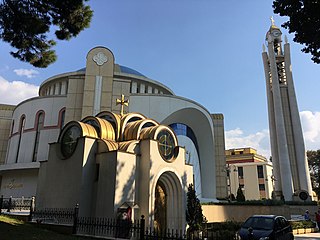
There are many landmarks in Tirana, Albania some of which are of considerable historical or artistic interest. Many monuments and landmarks situated in Tirana, date back to the Illyrian, Roman, Greek and Ottoman periods.
Albania has been a secular state since its founding in 1912, despite various changes in political systems. During the 20th century after Independence (1912) the democratic, monarchic and later the totalitarian communist regimes followed a systematic secularisation of the nation and the national culture. The Albanian understanding of secularism has strong influences from the French laïcité.
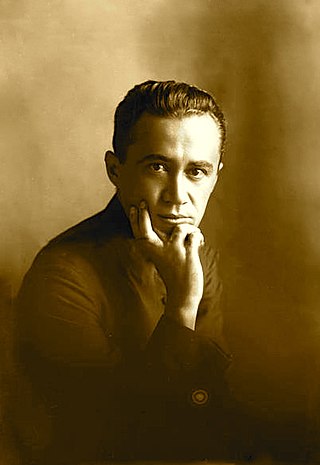
Lazër Shantoja was an Albanian blessed, publicist, poet, satirist, and translator into Albanian from Goethe, Schiller and Leopardi, as well as his country's first Esperantist. He was one of the first Catholic priests, arrested by the communist government, and the first Albanian priest that was shot by a firing squad. He was accepted by the Catholic Church as a martyr in 2016, part of the Martyrs of Albania.
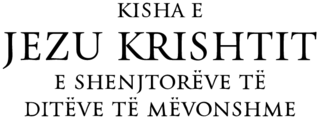
The Church of Jesus Christ of Latter-day Saints has been present in Albania since at least the early 1990s. In 1993, there were approximately 100 members in the country. In 2022, there were 3,314 members in 14 congregations.
















